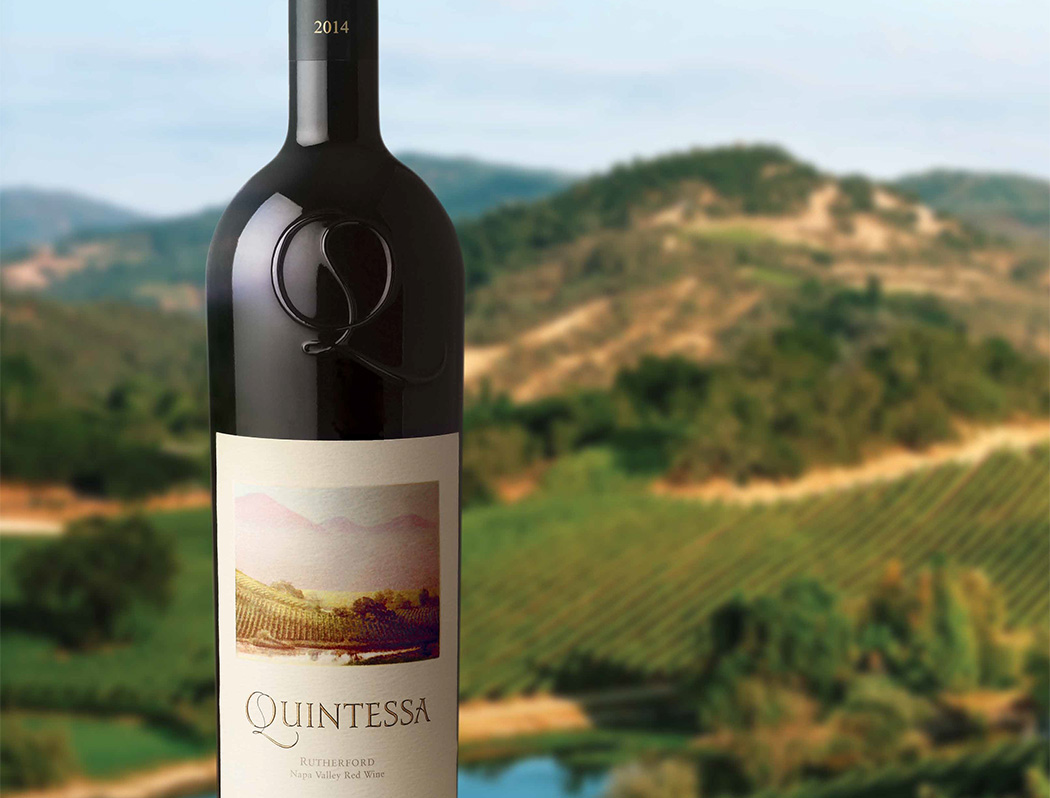
A Wine of Harmony
Winemakers are always attuned to the fact that Mother Nature calls the shots, “but 2014 was really a reminder that you’re at the mercy of Mother Nature,” recalls Rebekah Wineburg, winemaker at Quintessa.
A longtime resident of Napa Valley, Rebekah, recounts a season that began as a parched California entered its third year of severe drought. Then in August, during the first days of an early harvest, the 6.0-magnitude South Napa earthquake rumbled through the valley, damaging homes and historic buildings, tossing barrels off their racks, and loosing enough groundwater to cause streams that had been dry for years to suddenly start running…
to the fact that Mother Nature calls the shots, “but 2014 was
really a reminder that you’re at the
of Mother Nature,” recalls Rebekah Wineburg, winemaker at Quintessa.
A longtime resident of Napa Valley, Rebekah, recounts a
season that began as a parched California entered its third year of severe
drought. Then in August, during the first days of an early harvest, the
6.0-magnitude South Napa earthquake rumbled through the valley, damaging homes
and historic buildings, tossing barrels off their racks, and loosing enough
groundwater to cause streams that had been dry for years to suddenly start
running.
Fortunately for Quintessa, the 280-acre estate in Rutherford
was distant enough from the epicenter that not even a single wineglass
shattered. “But there was a change to the feeling of the vintage,” Wineburg
says. “It made you think about what’s important in life—your family, your
friends, the good you leave in the world. And that’s what was on our minds
while we were making the 2014 vintage.”
As Quintessa’s harvest began on September 5th,
that sense of connection ran through the work like a current. “It was truly
amazing to feel the spirit of community,” Meaghan Becker, recalls. “Despite the cataclysm that came before it, the harvest was
magnificent: the result of a growing season with no heat waves or temperature
shocks.” The grapes ripened with excellent acidity and, once again, Quintessa
produced an exceptional vintage that perfectly expresses the estate and its 26
vineyard blocks. Each block—planted with Cabernet Sauvignon, Merlot, Cabernet
Franc, Petit Verdot, and Carménère—was harvested in sections so the fruit could
be picked at the moment it was showing its best character. “In the end, the
fruit, the oak, and the acidity all came together easily,” Wineburg says.
“Everything is very harmonious in the wine. It has a bright, savory, vibrant
style and is accessible
on release.”
Dense and dark in color, this precocious wine is redolent
with the aromas of fresh cherry and blackberry, layered atop notes of violets
and graphite, and hints of cedar spice. Deftly balanced—powerful and weighty,
yet also elegant and nuanced. A smooth, supple tannin structure promises a long
and glorious evolution in the cellar, yet another hallmark of Quintessa and of
a wine that is destined to become another exceptional vintage.
Creating a wine like this, despite Mother Nature’s
formidable challenges, is largely the benefit of the foresight of Quintessa’s
founders. Agustin and Valeria Huneeus bought the estate when it was entirely
raw land, recognizing that its unique range of soils, microclimates, and
exposures—created by the estate’s five hills, lake and riverbed, and
surrounding forest—could produce a red wine to rival the best in the world.
Valeria, a scientist and viticulturist, designed each plot to take full
advantage of its location, and from the beginning farmed it organically. To
this day, every drop of water irrigating the
vineyards is sourced from the property’s lake.
The 2014 vintage heralds Quintessa’s 20th-anniversary
release. It is a milestone, yes, but one that the Huneeus family isn’t making a
big fuss over. “We try to keep everything in perspective,” says Agustin
Francisco Huneeus, the son of Agustin and Valeria. “In our own lives, 20 years
is a significant stretch of time. But in the story of Quintessa, and the story
of this land, it isn’t very long at all. So as proud as we are of our
contributions, when we place ourselves and our work in that broader context, it
brings a certain amount of humility to what we do.”
Most of the estate’s vines
are now 27 years old and mature enough to handle the adversities of challenging
weather conditions. Water has always been a vital part of winegrowing, and the
drought put it on the top of the agenda. “In 2014, we did trials in different
vineyard blocks to see how they respond to watering,” Wineburg says.
By placing tiny probes into different parts of individual vines throughout the
vineyards, the team was able to monitor how the vines use water in real time.
Among the lessons: Use less water in higher elevation blocks, such as Corona,
by applying smaller amounts of water more often. And in lower blocks, down in
the bench where there are deeper soils, don’t water until later in the day.
“We’re training the vines for drought,” Wineburg says, “and gaining an even
better understanding of the diversity of our blocks and how all the different
blocks respond to the heat.”
The 2014 vintage also includes Quintessa’s first barrel
fermentation trials. The project, suggested by Quintessa’s consulting
winemaker, Michel Rolland, involves using smaller, new French oak barrels to
ferment the juice and keep it gently in contact with the skins. The process
produces more dark chocolate characteristics in the wine, with a luscious
texture. “It’s not like there are winemaking secrets or magic at play here,”
Wineburg says. “It’s just matching the right technique to what we get from the
vineyard.”
This was, indeed, a pivotal year—reconciling the stress of
drought and earthquake with the sustenance of a nearly perfect growing season
that led to a wine of remarkable elegance and balance.
To acquire the 2014 vintage, click here.
